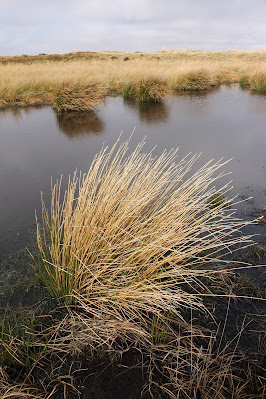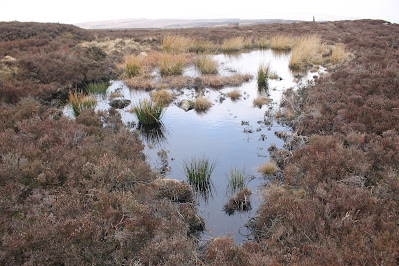It was the end of February, the sun was spring-like but the wind bracing as I stood alone on the highest point of Canada Tips, Blaenavon. Looking east towards the Keepers Pond, its car park was popular and a single wild swimmer laboured. Beyond and on the horizon I could see the Foxhunter car park and from it a couple of groups of excited school children complete with walking poles and maps in waterproof covers emerged. Later a mini-bus resplendent in the Cranbourne School crest arrived to collect the returning walkers.
I moved to seek refuge from the wind, just in time to view five unlicensed scramblers pick their way between the spoil tips only to cross the Abergavenny Road and motor in characteristic lawless style along the road to the Foxhunter car park then out of sight. The bikers had left their mark on the landscape cutting through the peat in a damaging care free manner. As I paused to take some photographs of the abuse laid bare in front for me a skylark climbed in song, but not quite full summer song, and then another and another.
Striding through the straw coloured molina I was startled by a red grouse that took off low over the upland vegetation and then down, surely to hunker down out of the keen wind. An old industrial reservoir breached long ago and purged of most of its water held sufficient to generate some interest. And so it proved my first clumps of frog spawn of the season were visible. On my return I peered rather gingerly into the crevices of a weathering sandstone outcrop to view a number of oak fern.











